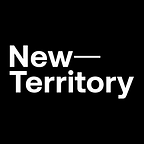The New Urban Ecosystem
As people pursue lifestyles in the suburbs and outside of city centres, having experienced the possibility and reality of working from home and the personal benefits of not having to commute daily to the office, the lens of our urban narrative is now focused on what our cities will become in the years ahead. Business as usual or a new urban renaissance?
Hybrid and remote working look here to stay as companies find the balance between lightening their infrastructure, overheads and environmental impact by letting their teams work remotely on the one hand and encouraging a new cohesion through focused cultural initiatives on the other.
If the main reason that most of us went into city centres was for work, what does the future look like for our urban ecosystem as things change?
Rather than representing the end of the big city, or at least a lessening of the importance of commercial city centres, the recent changes in people’s habits, lifestyles and expectations opens an opportunity for planners, developers and citizens to rethink the purpose, value and uses of urban spaces and buildings.
Here are three ways that we can outline a concept of a new urban ecosystem, one which provides for people’s needs and priorities and that will entice them back into a newly purposeful city centre, regardless of how and where they choose to work.
NEW EXPERIENCES
The purpose of our office buildings which were once uniform and monocultural needs to become richer and more varied.
What if a building’s layout could be quickly and easily re-organised to allow for new business and service types — What would it feel like to spend time in an office that was part of a carefully programmed ecosystem, where instead of every tenant being a workspace, there was a richer mix of retail, community initiative, culture, micro-fabrication and hospitality that made up a self-reinforcing whole?
If we think of a building’s purpose and layout to not only facilitate the current commercial practices and needs of its visitors and inhabitants, but also to delight and elevate, we could develop buildings as brands with engaging and holistic values.
NEW FUNCTIONALITIES
Buildings need to be thought of as part of a connected loop of sustainability and self-sufficient utility.
What if buildings could be used to grow food which is then used in the restaurants throughout and nearby? What if waste products and materials could be re-purposed on site, used by fabricators to serve building or neighbourhood production? What if rather than replicating infrastructure into identikit buildings, these functions and utilities were developed to be shared and integrated through a close network?
If a more circular and regenerative use of the building was considered, helping the sharing of resource and utility whilst still encouraging the transportation and flow of people, buildings would work together, rather than standing next to but separated from each other.
NEW COMMUNITIES
Our Urban Ecosystems need to be inclusive and community based.
What if we thought of office buildings to be less the exclusive domain of suit and tie wearers, privileged with the rights to cross the turnstile gates, but rather as porous spaces which are equally responsive to the needs of community as industry.
What if space throughout the building was provided for serendipity, regardless of whether one had a set purpose for visiting? What if digital platforms could connect the building’s residents, businesses and owners, to create an ecosystem which understands and responds to people’s behaviours inside and surrounding, encouraging interaction and community.
Through dynamic use of the space of the building and an openness to welcome diverse businesses, initiatives and cultural practices, we could create a richer environment which provides a broader sense of purpose and value to the community, whether they are fixed residents, one off visitors or the people who live in the surrounding neighbourhoods.
Reconsidering the Urban Ecosystem from a position of open and shared experience, regenerative functionality and community, will provide commercial developers and owners with the tools to build developments which not only respond to the challenges of the shifting workplace and changing needs of workers, but which through their flexibility and holistic values will entice and delight people outside of the office and the workplace narrative.
Author: Hugo Jamson, Creative Director at NewTerritory.
